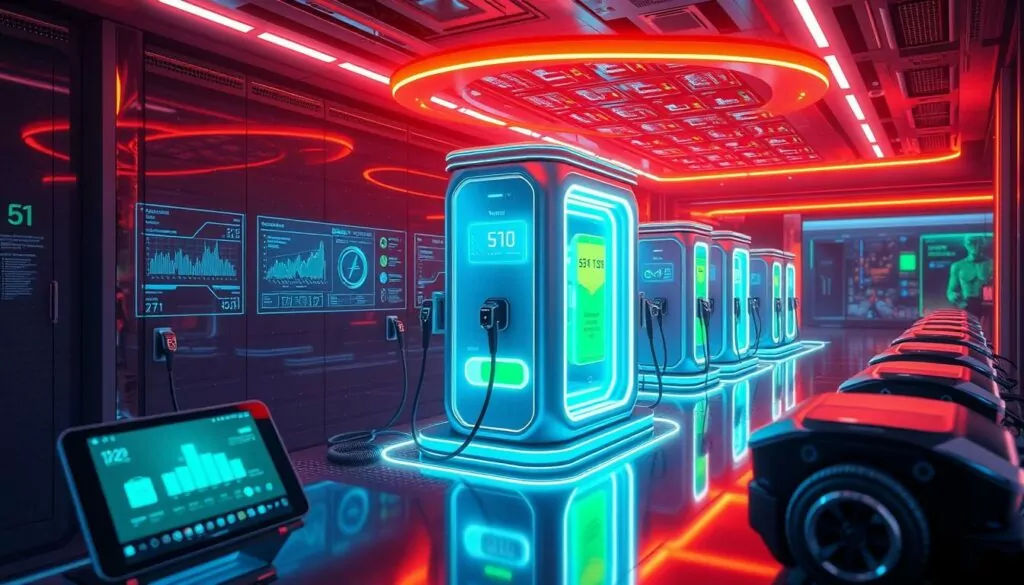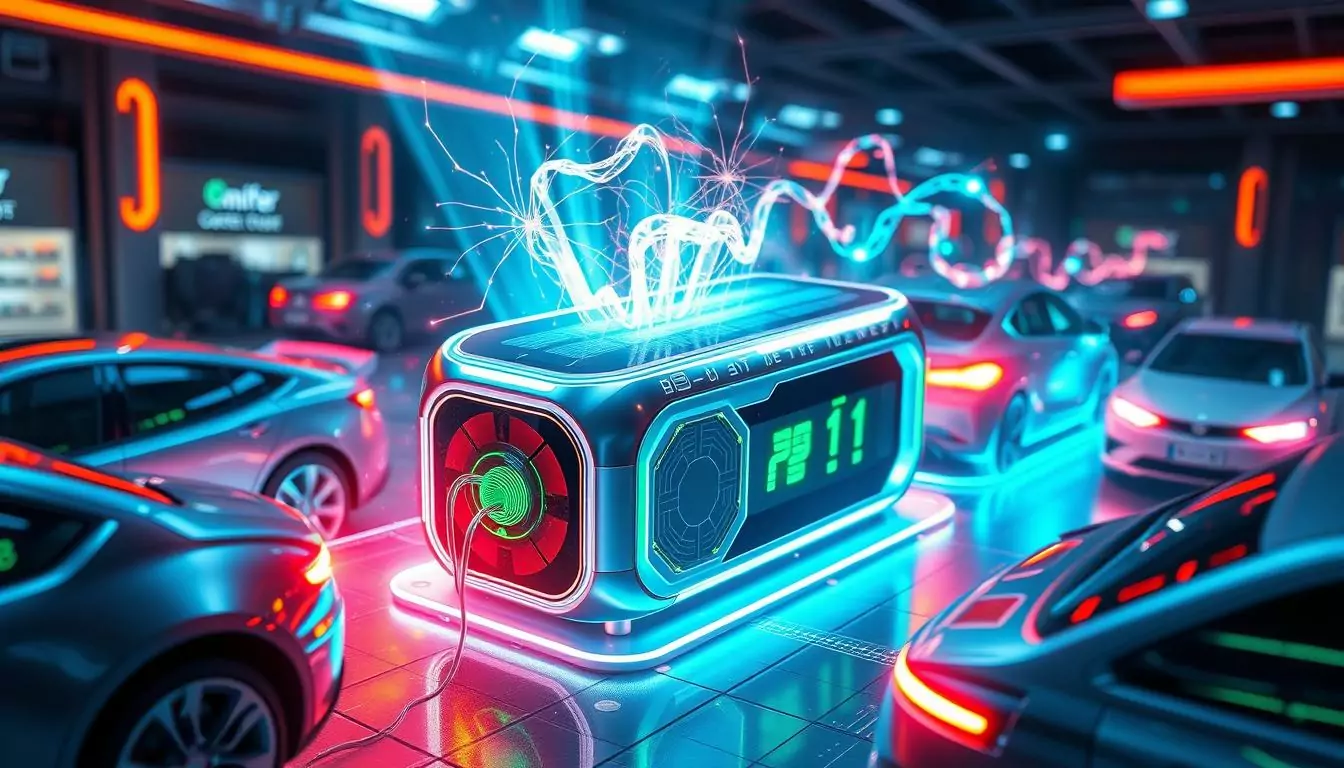Hey there! Have you ever wondered how far battery technology has come? I mean, we’re talking about lithium-ion batteries hitting an energy density of 450 Wh/L—a whopping 500% jump from those old-school lead-acid ones. This isn’t just a tech upgrade; it’s a game-changer for electric vehicles (EVs) and all our portable gadgets. With these advancements, charger innovations are stepping up big time, making life easier, greener, and way more efficient. Let’s dive into what’s powering this revolution as we roll into 2025!
Why Battery Charger Innovations Matter Now
I’ve gotta admit, watching battery tech evolve feels like something out of a sci-fi movie. The rise of EVs and our gadget obsession has cranked up the demand for smarter, faster charging. New chargers aren’t just about convenience—they’re slashing environmental impact and squeezing every drop of energy out of those batteries. Seriously, with research pouring in, it’s wild how fast things are changing. Did you know the cost of lithium-ion batteries dropped from $1,000/kWh in 2011 to just $150/kWh by 2022? That’s making fast-charging dreams a reality!
Key Highlights of Modern Charger Tech
- Energy Efficiency: Lithium-ion packs paired with smart chargers boost efficiency like never before.
- User-Friendly Designs: Think customizable, modular setups that fit your life.
- AI Smarts: Predictive maintenance keeps batteries humming along smoothly.
- Eco-Friendly Options: Solar-powered chargers? Yes, please—sustainability rocks!
Here’s a quick peek at how today’s batteries stack up:
| Type of Battery | Energy Density (Wh/L) | Typical Charging Time | Cost (per kWh) |
|---|---|---|---|
| Lithium-Ion | 450 | Under 1 hour | $150 |
| Lead-Acid | 70 | 4-8 hours | $1,000 |
Wireless Charging: Cutting the Cord for Good
Okay, let’s talk wireless charging—because who doesn’t hate tangled cords? I just plop my phone or EV on a pad, and boom, it’s powering up via electromagnetic magic. Companies like Tesla and BMW are all over this, even testing roads that charge your car as you drive. At home, I’ve seen chargers built into countertops—talk about clutter-free! Sure, there’s some energy loss, but the tech’s getting sharper every day.

Solar-Powered Chargers: Sunshine Meets Sustainability
Now, solar-powered chargers? They’re my eco-warrior fave. Harnessing sunlight to juice up my devices feels so futuristic—and it’s good for the planet, too. A typical 100Ah lead-acid battery takes 100 hours with a basic charger, but solar cuts that to about 8 hours. For lithium-ion? I’m talking 2-3 hours! Plus, with 4 million U.S. homes on solar and a 30% tax credit, it’s a no-brainer investment.

Adaptive Chargers: Smarter Charging, Longer Life
Adaptive chargers are like the brainiacs of the bunch. They tweak the charge based on what the battery needs—faster, safer, and way better for longevity. Overcharging? Nope, not on their watch. I love how they use real-time data to keep things humming. It’s like having a personal battery butler!
Benefits of Adaptive Charging
- Extends battery life by dodging overcharge stress.
- Cuts down on heat and wear—battery health for the win.
- Works with all kinds of batteries and setups.
Modular Designs: Charging My Way
Ever wish you could build your charger like Lego? Modular designs let me do just that. I can swap parts to match my devices, upgrade when new tech drops, and keep things efficient. With lithium-ion demand soaring in 2022, these chargers are clutch for handling all sorts of battery types.
AI-Driven Chargers: The Future’s Here
AI in chargers is straight-up cool. These smart systems predict when my battery might flake out, keeping downtime at bay. Stanford folks say AI can guess battery life with 95% accuracy—wild, right? It’s all about real-time tweaks and analytics that make charging a breeze.

High-Efficiency Chargers: Speed Without Compromise
Need a quick charge? High-efficiency chargers, with materials like Gallium Nitride, are my go-to. Nyobolt’s EV can hit 80% in under 5 minutes—155 miles of range, just like that! Tesla and Porsche are pushing this too, making EVs feel as fast as filling up a gas tank.
EVs and Beyond: The Big Picture
The EV world’s buzzing, and charger innovations are the spark. By 2026, $200 billion’s slated for better charging tech. Wireless, bidirectional charging (yep, powering my house from my car!), and vehicle-to-grid systems are shaking things up. Soon, solid-state batteries will pack even more punch—what a time to be alive!
Wrapping It Up
So, what’s the takeaway? Battery charger innovations are lighting the way to a greener, faster-charging future. From cord-free wireless to sun-powered options, I’m loving how these changes fit my life—and the planet’s needs. Want more? Check out this deep dive on lithium trends. What’s your favorite charger perk?
FAQs
How fast can modern chargers power up an EV?
Top-tier chargers, like Nyobolt’s, can go from 10% to 80% in under 5 minutes. Most high-efficiency ones take less than an hour—way better than the old days!
Are solar chargers worth it for daily use?
Totally! They’re eco-friendly, cut costs long-term (especially with tax credits), and charge fast enough for most gadgets or small batteries.
What’s the deal with bidirectional charging?
It’s genius—your EV can send power back to your home or grid. Think energy backup or cashing in during peak demand. California’s even eyeing it for all new EVs post-2027!
Can AI really make batteries last longer?
Yep, AI tracks usage and tweaks charging to avoid wear. Studies show it’s 95% spot-on predicting battery life—pretty slick, huh?
